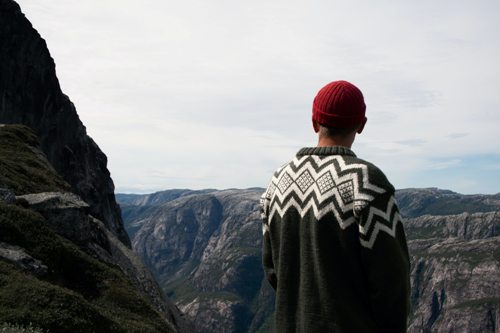To survive for long enough and score a kill, you will need to answer one question: “Which material provides warmth even when wet?”. If the answer does not immediately appear in your mind, you are not ready to take on the wilderness just yet. Read this article to find out more!

Contents
Which Material Provides Warmth Even When Wet?
#1. Wool:
Everyone knows wool as the go-to material for winter sweaters that you get by shedding sheep. Everyone loves wool because it keeps you warm and safe in harsh weather but cool and ventilated under the summer sun.
There is no single material that goes the distance like wool does: that’s why it sits at the top of this list! The reason why wool is so good at preventing you from catching a cold while on your hunting trip is a feature called “hygroscope.”
This means that wool can regulate your body temperature while being on your surface because all the moisture your body comes across will be taken into the fiber already. You will not feel any type of wetness, as wool prevents water and moisture from even making contact with your skin!
Aside from that amazing feature, wool is also fire-resistant and mold-resistant. These features make sure that you will never have to worry about catching ablaze or smelling weird after hours of running after a fawn. Be sure to grab oiled and tightly woven wool inner and outer layers before accepting that invitation to the woods and find deer.
The only downside to wool is that while you hide in bushes to aim a shot using illuminated reticle scope, your outer layer may catch onto a nearby twig and tear. Beware of your surroundings while you hunt!

#2. Cotton:
Cotton is the next best choice if you forget your wool layer at home on some faithful hunting trip. The material is utterly ventilating, light, flexible, and comfortable to move about in, so you will not have to worry about chasing after targets in it. Cotton also is very quiet when coming in contact with each other, so lurking is entirely possible.
Cotton retains water and moisture quite well, but the material will become weighted with the added liquid at one point. This does not affect the fabric’s ability to keep your body temperature stable too much, so you will still stay relatively warm in cotton clothing while hunting.
#3. Down:
Down-made from poultry feathers like ducks or geese is the priciest material to be stuffed in a coat on this list. They are very durable and great at keeping any hunters warm (if they are willing to pay for the expense, of course).
The reason why Down is on this list is not that it is waterproof. Not only does it absorb water tremendously, but it also takes a dreadfully long time to dry and be useful once more. Once your down is soaked, it will essentially be useless. That is why most Down-lined coats and jackets always have a thick layer of waterproof material outside like polyester.
With that said, however, if you own a Down coat, please hang it and let it dry completely before you take part in the hunting season again.
#4. Fleece:
Fleece is an artificial material from polyester fiber, so it can be quite cheap to acquire from the market. It is also one of the most widespread materials for hunting gear, so that you will find a vest with it as a component fairly easily. As for its ability to provide warmth, it is no less effective than wool while being considerably lighter and easy to buy.
Fleece also has the advantage of drying incredibly quickly. Therefore, if you pursue prey under the rain, or just happen to sweat a lot, wearing fleece will allow you to feel warm, dry, and not at all stinky later on.
However, you should know that most hunters will not choose to wear fleece alone if they can choose to do so. This is because fleece does not stop wind very well, so it is not secured enough to be an outer layer or the singular layer.
#5. Nylon:
Nylon is another synthetic material, so products made from it are on the affordable side of this list. The majority of nylon available on the market is coated in urethane to make it waterproof and easy to wash. Almost nothing can stick on the nylon surface for long, as a testament to its feature of water repellency.
Because it is so water-resistant, if you sweat underneath a nylon layer, you will suffocate as sweat has nowhere to go. Additionally, you will smell incredibly rancid. That is probably why the most commonly used nylon item for hunters is a raincoat!
How Should A Hunter Dress In Rainy Season?

Be sure to have lots of layers to your ensemble, and consider what goes on top of what very carefully. We highly recommend the order of wool against your skin, fleece or more wool over that, and then a water-resistant synthetic layer lasts on the outmost.
Nylon vests and raincoats are also the most likely products to have camouflage prints, so you will be able to blend in with the surroundings with one product!
This way, you will retain heat to your body while minimizing the chance of the layers catching moisture and becoming heavy!
Ending Note
Which material provides warmth even when wet? Anything from wool, cotton, fleece to non-absorbent nylon should do the trick. However, even with these materials, you should layer up and get proper heat sources after hunting. We wish you a great shooting season!

I am Jerry Gonzalez, and my heart beats for the great outdoors, especially in the breathtaking landscapes of Helena, Montana. Engaging with fellow enthusiasts online and at local hunting clubs has been a rewarding experience, and I find great joy in sharing knowledge and experiences with like-minded individuals. My goal is to empower my fellow hunters with well-informed choices, regardless of their experience level.
